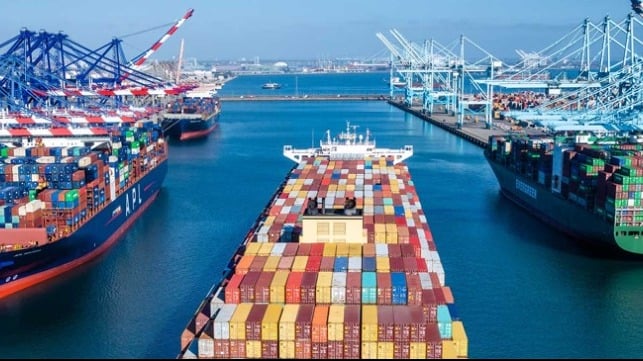Port of Los Angeles Ended 2020 Strong Continuing Investments in 2021

Bolster by a strong second half of the year with increasing volumes into the year-end holiday season, the Port of Los Angeles reported that it achieved its fourth highest volume year in the port’s history despite the numerous challenges of 2020. Speaking at the annual State of the Port of Los Angeles event, held virtually this year, port, city, and state officials highlighted the achievements and the goals for the year ahead.
The nation’s busiest container port moved 9.2 million TEUs in 2020, which represents a 1.5 percent drop versus 2019, but a strong recovery from the declines in the first half of the year. Los Angeles’ third- and fourth-quarter 2020 cargo volumes increased 50 percent over the first half of the year. The volume increases driven by a consumer buying surge continued far later into the year than has been typical and port officials highlighted that the terminals continue to handle extraordinary volumes into the start of 2021. They cited as an example a 94 percent increase in traffic the week before Christmas versus the same week in 2019.
“Our container business in 2020 was the most erratic we have ever seen, with volumes plunging nearly 19 percent in the first five months of the year, followed by an unprecedented second-half surge,” said Port of Los Angeles Executive Director Gene Seroka. “Our ILWU longshore workforce did a great job adapting to the huge swings in volume, as did port truckers and everyone else involved in moving cargo through our Port. In a year of great difficulty, we are extremely grateful for the tenacity and resolve of all of our partners.”
The port’s container import volumes drove the results in 2020. As the port officials highlighted throughout the year, export volumes have been on the decline at the Port of Los Angeles. Blaming the trade tensions among other factors Seroka highlighted that only one in four containers leaving the port for Asia had been loaded with goods.
Beyond the container segment, the port saw deep declines in its other businesses. The cruise industry, of course, was suspended and many cruise ships left the region only to return at the end of 2020 making service calls in the port. The ro-ro vehicle transport business also experienced steep declines due to lower consumer purchases as well as drops in liquid bulk and steel volumes. The only other segment that remained strong was the produce and perishables imports coming primarily from the west coast of South America.
During his speech, Seroka laid out the port’s priorities for 2021, including job creation, cargo growth, infrastructure investment, accelerating zero-emission technology development and deployment, and continued development of the waterfront community. He reiterated the port’s focus on supply chain efficiency and optimization, calling for nationwide port data connectivity that could provide enhanced visibility, efficiency, and choice for cargo owners, as well as a more stable supply chain.
“If we want America to improve as a leader in global trade, we need nationwide port data connectivity with agreed-upon data standards and open architecture system that provides interconnectivity between major U.S. ports, service providers, and the freight they move,” said Seroka.
The Port of Los Angeles will be moving forward with its digitization efforts in 2021. This includes the development of “The Control Tower,” an addition to its cloud-based data solutions. This new application will provide new levels of metrics and data, including real-time port level views of turn times, truck capacity management information, and detailed velocity metrics. It follows the port’s 2020 introduction of a data dashboard providing a three-week-in-advance look at incoming cargo and another real-time data tool helping truckers know when and where to return empty containers to terminals.
Despite the introduction of these new planning tools, the port experienced a series of operational issues in 2020 including delays for inbound ships. Analysts and shipping industry executives have said they expect these volume-driven delays to persist into 2021.
Seroka acknowledged several challenges Los Angeles faced in 2020, including drayage truck inefficiencies caused he said by the container volume surges. Drayage trucks currently handle about three-quarters of all import and export containers moving through the port. In response, Seroka announced a new Truck Turn-Time and Dual-Transaction Incentive Program. Starting in February, the program will financially reward terminal operators who move containerized cargo faster and more efficiently through their terminals.

that matters most
Get the latest maritime news delivered to your inbox daily.
Despite the pandemic, Seroka noted the progress on $473 million in capital projects, which include eight major terminal, rail, and roadway improvements. The port is also moving forward on its goal of zero-emission terminal equipment by 2030 and a zero-emissions drayage fleet by 2035 and will continue its capital programs in 2021.
The complete State of the Port presentation is available online.
